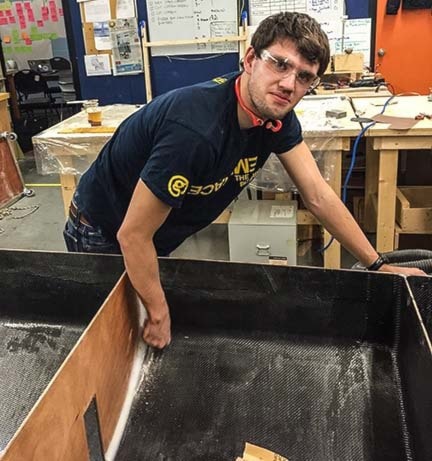Sailing across the Atlantic Ocean isn't a relatively big deal nowadays ever since Christopher Columbus first did it in 1492.
However, a team of UBC students are hoping to make history again with a transatlantic crossing by boat, this time with a unique twist.
This transatlantic crossing will be by an unmanned and autonomous robotic 'sailbot'.
And if all goes to plan, a Cranbrook native will be in on that history-making event.
Neil Dobie, a fourth-year mechanical engineering student, has been involved with the project since the idea was conceived.
Initially, Dobie and four other students got together to resurrect the sailbot program, which had been defunct for a few years. In 2011, the group began building small sailbots and entering them into regattas around North America.
And their vessel started winning.
"After we went and did everything we could do with this regatta, we went, 'Well, what's next? There was this thing called the he Microtransat Challenge, and that's where you cross the Atlantic Ocean autonomously and we said, 'Well, lets do it'," Dobie said.
With the team growing to 70 members, the race is on to get their newest craft field-tested in time for a transatlantic attempt in August, where they will launch from Newfoundland.
It's not the first crack at a transatlantic crossing with a robotic sailboat; other European groups have tried, and the U.S. Navy recently made an attempt.
However all have failed because of weather challenges, or collisions with ocean debris and a myriad of other reasons. One boat was even stolen during it's attempted run.
For the last four years, the UBC team cleaned up at a few sailbot regattas around North America. They won an event in their backyard in Vancouver, taking the crown away from the U.S. Naval Academy, and cleaned up with a perfect score at another event in Boston.
Dobie's main responsibility includes overseeing construction of the physical boat itself, such as the hull, the keel, rudder and the sails.
"I've been involved in a couple of the design tasks—the rudder and the keel and I've been mostly managing the construction side so back from day one over a year ago when we started construction in January last year, I've been involved in every step of the process until now," Dobie said.
After taking lessons learned from the racing events, the team began planning for a transatlantic run and troubleshooting the expected challenges.
The racing boats were just over 2 metres long, but the trans-atlantic vessel is bigger at 5.5 metres.
"In the trans-atlantic boat, we have to be able to handle anything that the Atlantic throws at us," said Dobie, "so it's 5.5 metres in overall length, but the water line is only four metres so at the very front where the bow is, there is a 1.5 metre of the boat out of the water, to make sure you can ride over waves and stay afloat when heavy winds are pushing you down. It can also deflect anything that you're going to hit.
"It's designed more being like halfway between building a tank and a race boat because you want to be able to go fast because the less time you have out there, the less chance you have of sinking but at the same time you need to be very strong to withstand the Atlantic which has up to seven or eight metre swells and 60-knot winds."
The team is planning to take it out to the west side of Vancouver Island next week and test it out on open water. The electronics package includes important components such as GPS, AIS, computers, sensors, sat uplink and solar panels.
"The plan is to have an infrared camera on the front of the boat that's going to be looking out as we're going that is going to take pictures and will analyze that on the completely on the boat itself, doing it all on it's own," Dobie said.
"We've done some preliminary tests and it's working out pretty well."
Two weeks is the expected crossing time, which covers roughly 2,500 kilometres. For more information on the project, visit www.ubcsailbot.org
